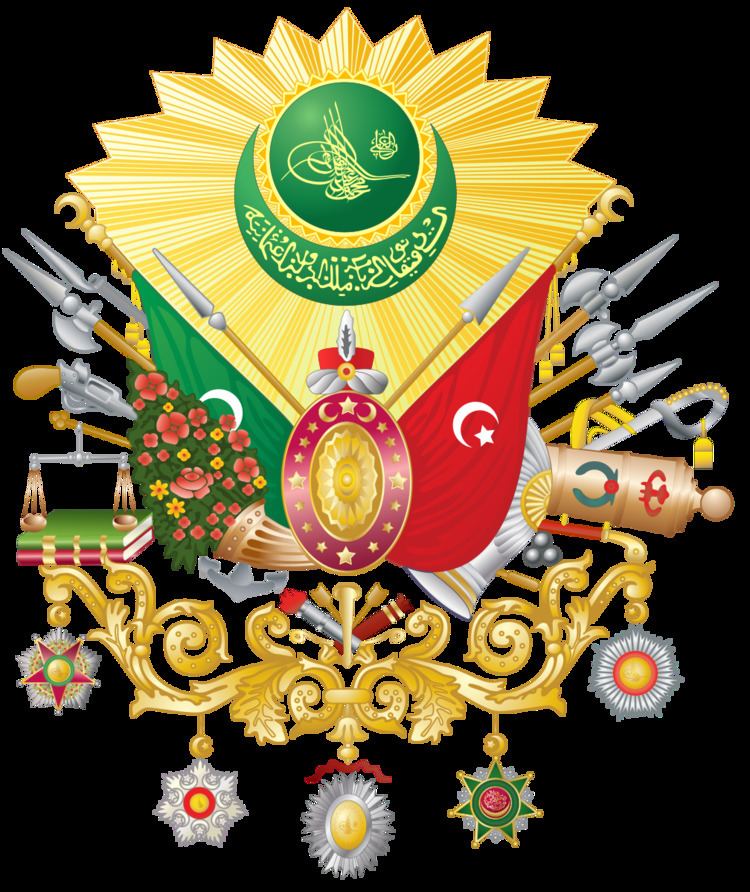 | ||
Osman's Dream is a mythological story relating to the life of Osman I, founder of the Ottoman Empire. The story describes a dream experienced by Osman while staying in the home of a religious figure, Sheikh Edebali, in which he sees a metaphorical vision predicting the growth and prosperity of an empire to be ruled by him and his descendants. The story emerged in the fifteenth century, more than a hundred years after Osman's death, and is thought to have been created in order to provide a foundational myth for the empire, as well as to embellish the life of Osman and explain his subsequent success.
Contents
Ottoman writers attached great importance to this supposed dream of the founder of their empire.
Story
Osman, a young prince, was known and praised widely for his religious piety. Osman began to visit a holy man, the Sheik Edebali (1206–1326), out of respect for his purity and learning. They met at Itburnu, a village in Eskişehir. After he had one evening accidentally seen his beautiful daughter, Mal Hatun, Osman's visits became more frequent, which led to a confession of love. However, Edebali thought that the disparity of positions made a marriage unwise and refused to give his consent.
In the following months, the disappointed Osman sought consolation in his friendships. With a lover's inspiration, he so eloquently described the beauty of Mal Hatun that the listeners fell in love with her. The young chief of Eskişehir also went to Mal Hatun's father and demanded her hand for himself. Edebali refused. However, Edebali feared the vengeance of the chief of Eskişehir, so he moved his residence from the neighborhood of Eskişehir to a very close place called Ertuğrul.
The chief of Eskişehir began to hate Osman and see him as his rival. One day when Osman and his brother Gokalp were visiting the castle of their neighbor, the lord of Ineani, an armed force approached the gate, led by the chief of Eskişehir and his ally, Michael of the Peaked Beard. (Michael was the Greek lord of Khirenkia, a fortified city at the foot of Phrygian Olympus.) They demanded that Osman be given up to them, but the lord of Inaeni refused to commit such a breach of hospitality. While the enemy lingered irresolutely around the castle wall, Osman and his brother seized a moment for a sudden attack. They chased the chief of Eskişehir off the field in disgrace, and took Michael of the Peaked Beard prisoner. The captive and the captors eventually became friends however; later, when Osman reigned as an independent prince, Michael sided with him against the Greeks, and was thenceforth one of the strongest supporters of the Ottoman power.
By this encounter at Ineani, Osman had triumphed over his rival and acquired a valuable friend, but he could not gain the maiden of his heart. For two more years he waited, sick with love and anxiety.
One night, when Osman was resting at Edebali’s house (for the shelter of hospitality could never be denied even to the suitor whose addresses were rejected), the young prince, after long and melancholy musing on her whom he loved, composed his soul in that patient resignation to sorrow, which, according to the Arabs is the key to all happiness. In this mood he fell asleep, and he dreamed a dream.
Osman told this dream to his host; the vision seemed to Edebali so clearly to indicate honour, power, and glory to the posterity of Osman and Mal Hatun, that the old Sheik no longer opposed their union. They were married by the saintly Dervise Touroud, a disciple of Edebali.
Osman promised to give the officiating minister a dwelling-place near a mosque and on the bank of a river. When Osman became an independent (which is when the Ottoman Empire began), he built for the dervis a convent, which he endowed richly with villages and lands, and which remained for centuries in the possession of the family of Touroud.
Interpretation and criticism
Most of the translation in this text is based on History of Ottoman Turks (1878), which was also based on Von Hammer's research. The text is modernized and has some missing sections.
Scholars agree that the story was not contemporary to Osman, but was created in a later period in order to establish a foundational mythology for the Ottoman Empire and to explain its success. However, it is known that Sheik Edebali was indeed a historical figure and that Osman likely did marry his daughter.
